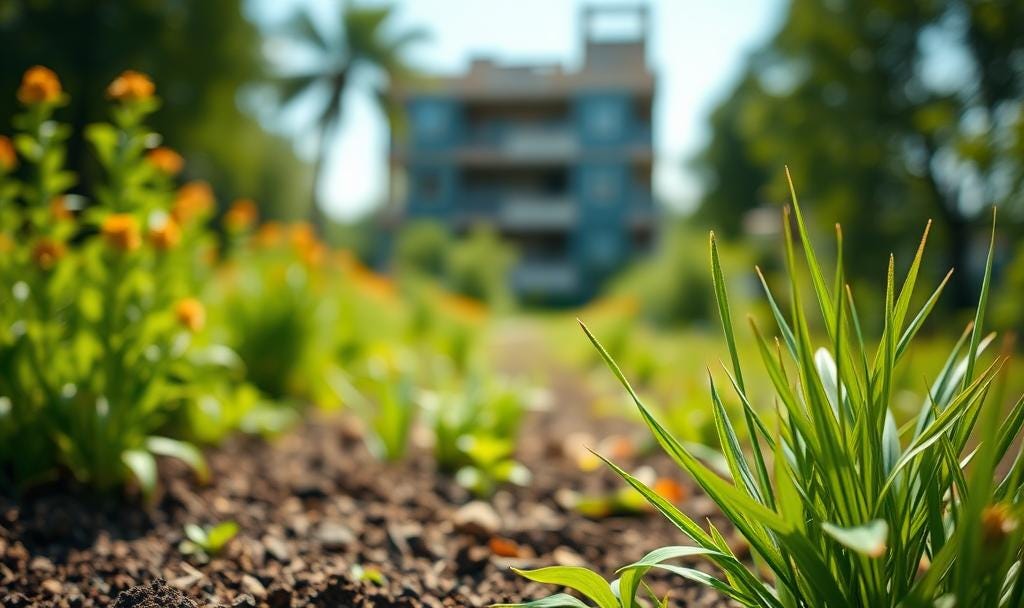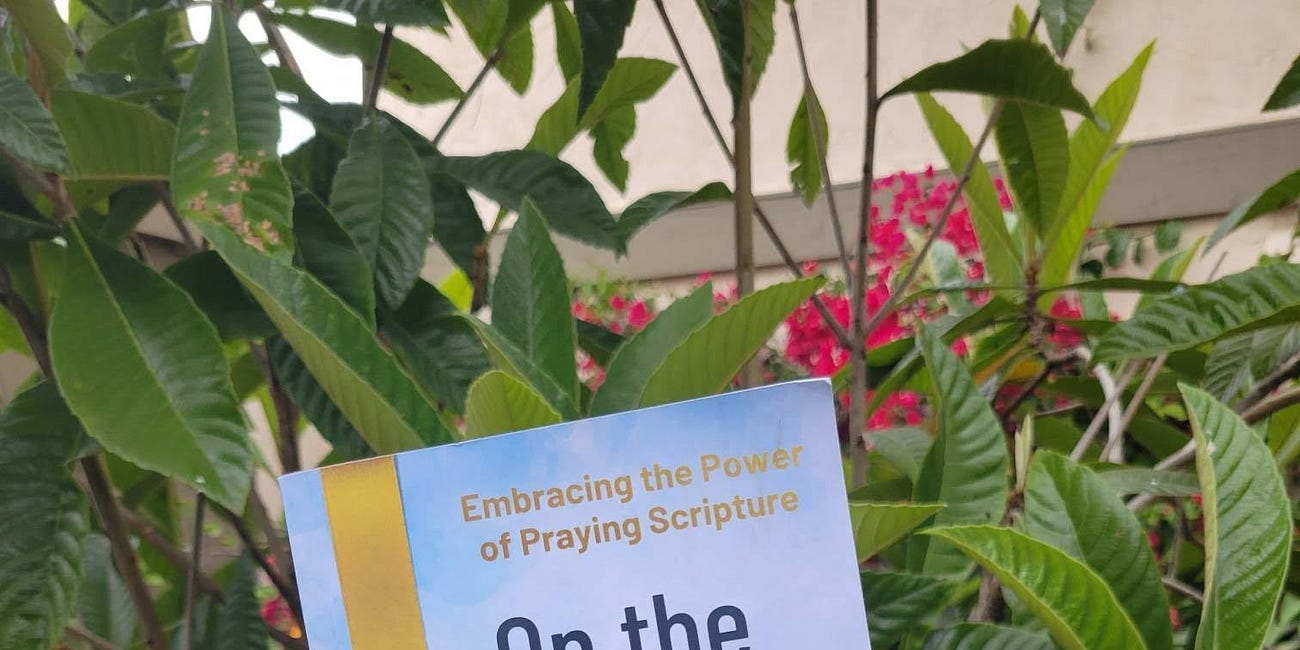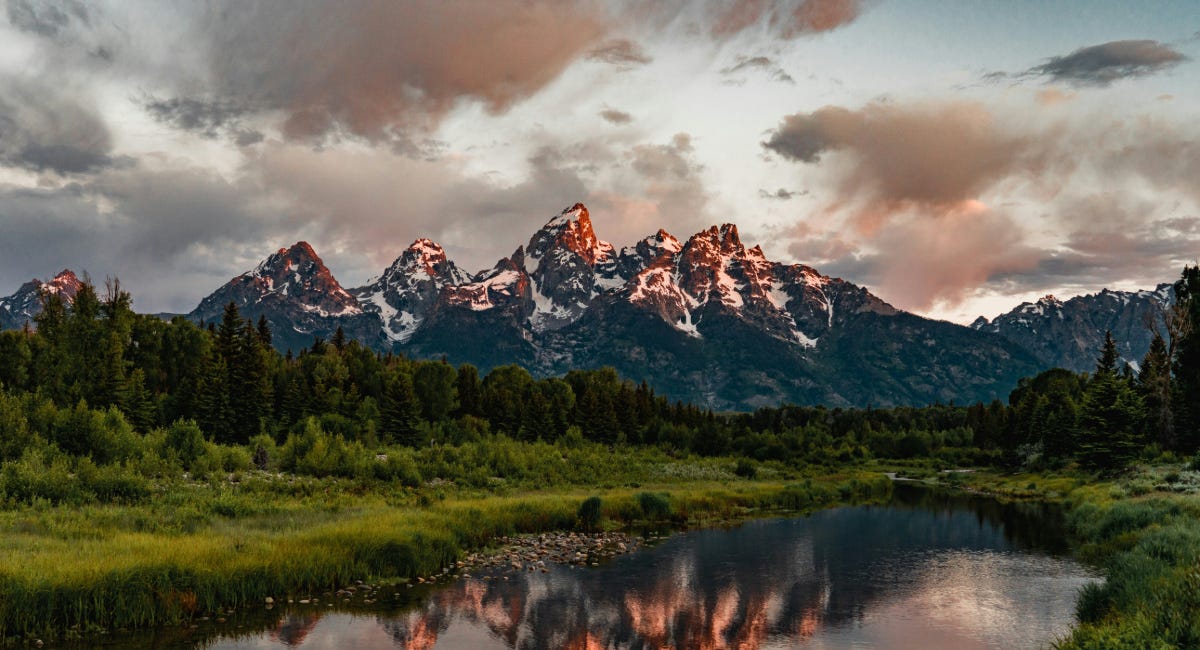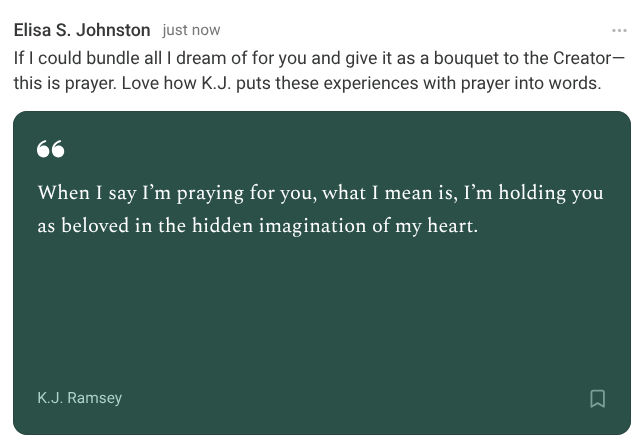More Expansive Than We Know
A compilation on prayer
A universal characteristic of humankind is a predisposition to pray. All across the globe, all throughout history, and in every culture people pray. Even in Western countries, where humanism is woven into the worldview, prayer isn’t outside the norm. It just isn’t postured towards God or other deities; we call it mindfulness, gratitude, and meditation.
It seems humans are wired for spirituality. I believe we were designed to commune with our Creator.

Prayers Transcend
This last summer I’ve been writing about prayer. As I reflected on these, it was evident how expansive prayer can be. Prayer can transcend environments, cultures, and socioeconomic classes.
I’ve prayed, surrounded by nurses in uncomfortable hospital bed. And I’ve prayed squished onto miniature toddler beds with my children. I’ve prayed sincerely in somber liturgies, and also wildly in charismatic spaces, while those around me laid out on the floor keening, while others jumped, shouting proclamations.
I’ve prayed with the wealthy, genuine words from those with their heads bowed, a panoramic view of the coast splayed behind them. I’ve prayed with the poor, our feet on trash-littered, grimy rain-wet floors on the street, on a dock, and on a boat.
I’ve prayed with a wide diversity of people—those who are neurotypical and those who aren't, like me. I’ve prayed alongside those with various behavioral or mental health conditions and those with disabilities.
I’ve joined with people from many tribes and tongues in prayer. There was the time I was invited to joyful songs of praise with Polynesians. There was the season I was part of a Spanish-speaking worship team as we wove our way through Southern Europe. I’ve been blessed by prayers from Nigerians, by Koreans, by Muslims who found Jesus. I can only marvel at how lucky I am to have had so many people from around the world who’ve honored me with their prayers.
My favorite prayer is outside in movement—on walks through the eucalyptus groves, stretching out on the beach, or dancing under the moon, palm trees above swaying. But my most fervent prayers have been in the safety of my bed, cuddled with a pillow on my side. This is “my raft,” a safe space to encounter God; it has been steadfast to hold me through the floods of anxiety, depression, illness, doubt, and loss of relationships.
Prayer can look so different based on the need, context, and the longings of our hearts. What spaces have you prayed in? Where have you found delight or release? Tell me!
A Compilation on Prayer
In case you missed any of these poems, articles, and other pieces about prayer, I compiled them below. I am curious how they might continue to teach us about the design of prayer. Let these be an invitation to dive deeper into the mystery of communing with God.
1. Prayer in Solitude
I believe we are designed for solitude—not for loneliness, but to be filled with life. But I had to discover this the hard way. This article I wrote for my writer’s guild,
, tells this story: The Secret Place: Designed For Solitude.When I discovered I was unexpectedly pregnant with my fourth child, one of my first thoughts was: I’m going to be alone again. I feared the responsibility of motherhood would once again push me away from community, from purpose, from using my gifts within the Body of Christ.
I was heartbroken. (Read the story here)
2. Prayers of Lament
Lament is one of my most favorite types of prayer. Lament is a gift. It helps us process and express our frustration.
Here is one of these grief-prayers I wrote. A Lament For Hungry Babies is about my infant son and my sorrow for mothers and their children in Gaza, in places of famine, and those feeling the tension of terminating pregnancy.
When my infant son was only one month old
A formula shortage slammed into our economy
Per usual, headlines went largely unnoticed
Low supply + high demand—we the mothers
Watched and Worried and Paid and Begged
Oh God? I prayed
(Read it here)
3. Listening Prayer
What about the back-and-forth dynamic of prayer? Here I shared what some of my conversations with God look like, often expressed through poetry, prayers, what letter-like responses from God.
Conversations With God
There isn’t a really good introduction to this. I usually save Authentically Elisa for long woven essays about my honest thoughts on tricky things in real life, like paradigms, faith, and healing.
4. Scripture in Prayer
Braiding scripture into our prayers was another topic we dived into at the beginning of the summer. For this, I tapped into
wisdom in an interview. You can read our discussion here.Why Pray Scripture? (An Interview with Jenn Soehnlin)
Last year one of my writer friends, Jenn Soehnlin, reached out to ask me for feedback on a chapter about justice. She was finishing her book, On the Same Page with God, which is fundamentally all about the practice of praying scripture.
5. Praying Psalms
If you’ve been around here any length of time, not only will you find a significant number of long-form woven essays, mostly on illness, trauma healing, faith, mental health, and justice—but you’ll also regularly be sent short psalms. I’ve been fascinated with the Psalms since my teenage years, as started writing my own around the same time. This summer I included emojis in this psalm, because, what better way to express emotions in this technological world?
6. Praying for Others
I ended up not writing anything about praying for others this summer.
put many of these thoughts into words so I decided to just pass her’s on instead.If you’ve also struggled with what prayer might look like as your former black and white easy faith shifts into something more complex, I encourage you to consider her essay on prayer for others. I hope that through it, you too might find beauty in praying once again.
Solitude, lament, listening, scripture, psalms, and praying for others are just some types of prayer. What other forms of prayer would you add to this? I would love to hear some of your thoughts, so please reply or share them below.
If this post was helpful, please tap the heart 🖤 icon, leave a comment, or reply to this email sharing something that stood out to you. Your engagement encourages me greatly. And when you engage here and/or share this, it helps these words reach others waiting for them.
Thank you.
You can find past posts visiting AuthenticallyElisa.substack.com
Follow me on Instagram here @AuthenticallyElisa
See what’s new on my Patheos column: Flourishing Faith and Justice








Beautiful! Thanks for including me and my book, and for sharing all these other resources and ways that you've been enjoying prayer!